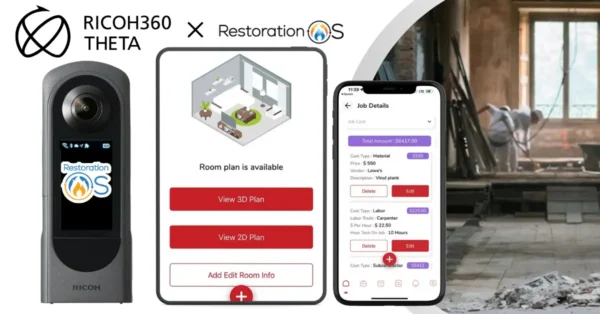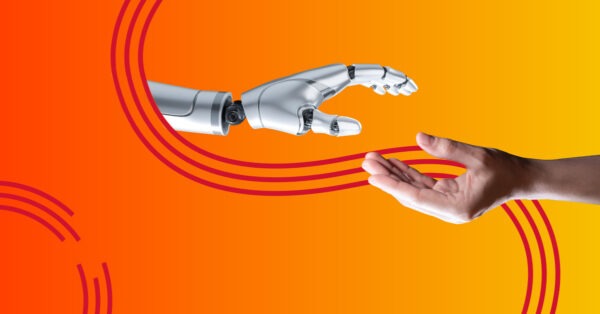Practical guidelines for implementing the technology in your business.
Looking at the current AI hype feels a bit like looking at the hamburger; everybody had been eating ground meat patties and meatloaves forever until some smarty-pants came along, put the meatloaf between two slices of bread, added some sauce and pickles, and served up the hamburger.
Similarly, we’ve all been using data for a long time: reports, modeling, suggestions, and visualizations. We called it data-driven decision-making. Not too long ago, another smarty-pants came along and put a fresh wrapper around it, and now, everything is AI. Not too long ago isn’t right, actually. In 1950, Alan Touring (as in Touring Test), published his article “Computer Machinery and Intelligence,”* which laid the foundation for everything artificial intelligence.
Today, we have three major AI models that drive how we use AI and what we can achieve with it: LLM (large language model), multimodal AI, and generative AI. All of them live on—you guessed right—data, good, structured data.
Thinking back some 15 years, when AssetDB and CompleteView became our best friends for collecting and visualizing data, they were designed to help us build suggestions for managed print services offerings. Nobody thought about calling it AI. CompleteView could only come up with its intuitive suggestions because of the data behind it. Over time, predictive and prescriptive models made it into the MPS portfolio. Today, we would say AI did it.
In a parallel universe, research, most prominently in the medical sector, saw impressive advancements based on data and algorithms. Today, millions of data sets collected and shared allow medical experts to be more precise with their analysis of scans, blood tests, and more, resulting in better medical support. Some would say the doctor is a genius; others interpret it as a great data analytics job, and a third opinion would label it AI.
Let’s cut the long AI story short and move on to the core ingredient you need to benefit from AI.
What’s in AI?
- Data, Data Handling, Database Modelling, and Data Processing
- Programming, Programming Languages, and Machine Learning
- Human Interaction
How to Get Started with AI
- Don’t Just Jump on It
- Make a list of what you think you need help with/want AI to help you improve.
- Educate yourself/your team on what AI is and what the different types of AI can do for you. (There are plenty of free and excellent courses available; see IBM, AWS, Google, Microsoft, and more.**)
- Make sure you have data—and the permission to use it—to work with.
- Make sure you have an AI policy in place (The do’s and don’ts of using free AI tools, paid online AI tools, and private/on-prem AI.).
- Understand the difference/collaboration between automation and AI.
- Understand writing prompts and necessary additional programming skills.
- Determine how you will monetize your newly acquired skills.
FMMs: Frequently Made Mistakes
- Unquestioningly trusting AI results. They could be wrong/contradicting what you want to achieve.
- Not removing typical AI results/phrases. They are super easy to spot.
- Not reviewing the sources LLMs use/quote. You may not like what they are.
- Forgetting to add a personal touch.
- Not carefully reviewing visuals created by AI. Some can be a bit creepy.
- Ignoring copyrights!
- Uploading sensitive information to free AI tools.
- Uploading (sensitive) code to AI-powered code pilots.
- Not carefully studying privacy agreements when installing private AI tools.
Yes, I am Using AI
- I enjoyed some training before I started using it.
- I work with it daily following simple advice: What can AI do for me today?
- I review every source a prompt returns.
- I am collecting my prompts to refine them.
- I use AI for sourcing ideas.
- I use AI to test my client’s ideas.
- I carefully study my clients’ privacy statements.
- I use AI to assist me, not to replace me.
Things I’d Like to See Done with the Support of AI
- Support tech support teams to find better answers faster from across all existing cases/answers.
- Support with finding better answers faster when visiting websites.
- Support with simplifying repetitive tasks.
- Support with reducing the current impact of AI-tools-based power consumption (500,000 KWH per day for ChatGPT only).***
- NOT replacing humans I can talk to but making these humans smarter.
Last but Not Least
- Don’t be an AI Doomsayer****. AI isn’t just bad; science and innovation, across all disciplines, benefit greatly from it.
- It’s our collective responsibility to make it work in other fields.
- We’re reaching the peak of the hype; things will cool off, and we’ll soon be living in a new, AI-enriched normal.
- No, AI didn’t write this article; however, it helped polish up grammar and eliminate typos.
Sources
*https://academic.oup.com/mind/article/LIX/236/433/986238?login=false
**https://www.ciodive.com/news/generative-ai-training-AWS-free-course/707695/
***https://www.digitalinformationworld.com/2024/03/blog-post.html
****https://www.newyorker.com/magazine/2024/03/18/among-the-ai-doomsayers
For further reading (again, no, AI didn’t cough these up; I really research/read a lot):
https://zapier.com/blog/best-ai-productivity-tools/
https://www.tableau.com/data-insights/ai/history
https://www.gartner.com/en/articles/understand-and-exploit-gen-ai-with-gartner-s-new-impact-radar




